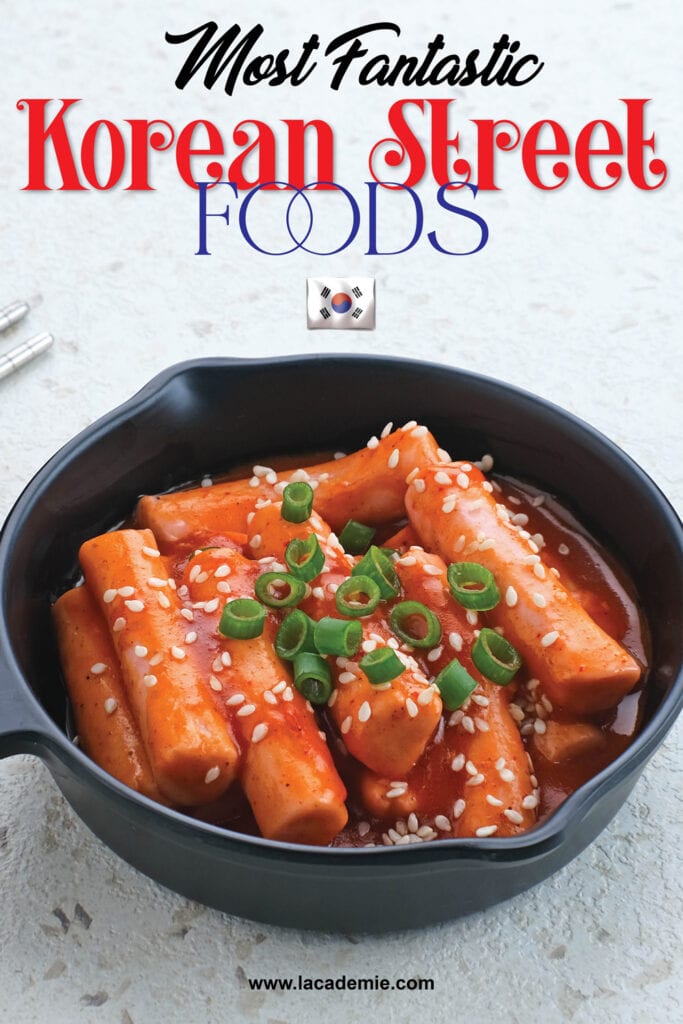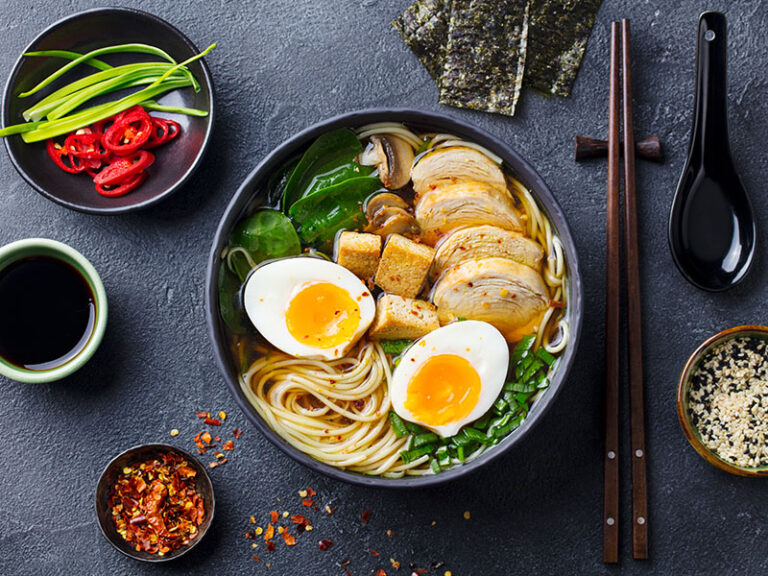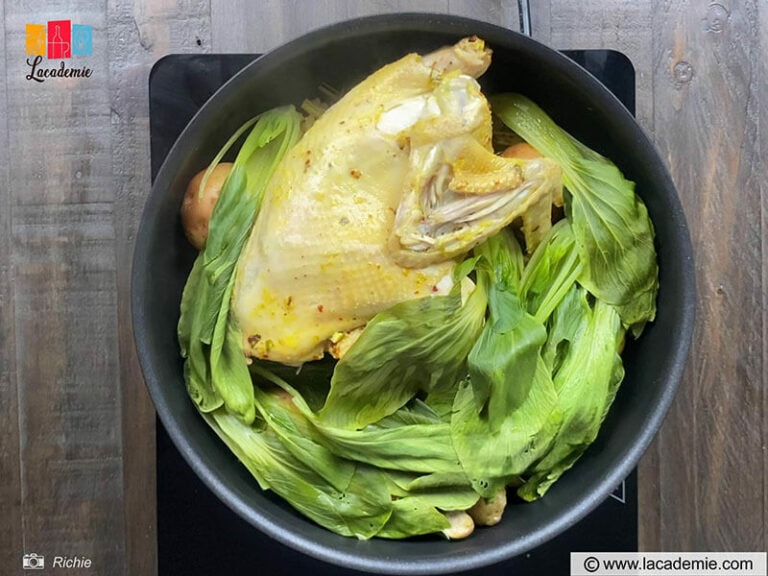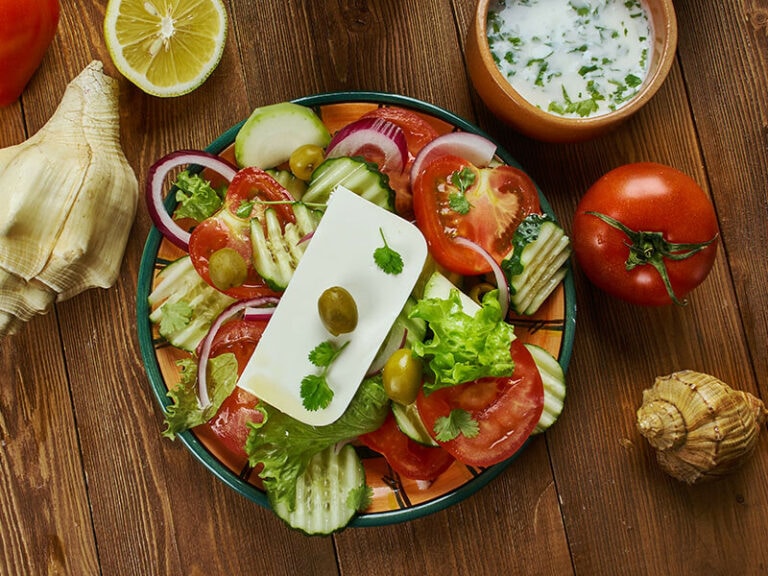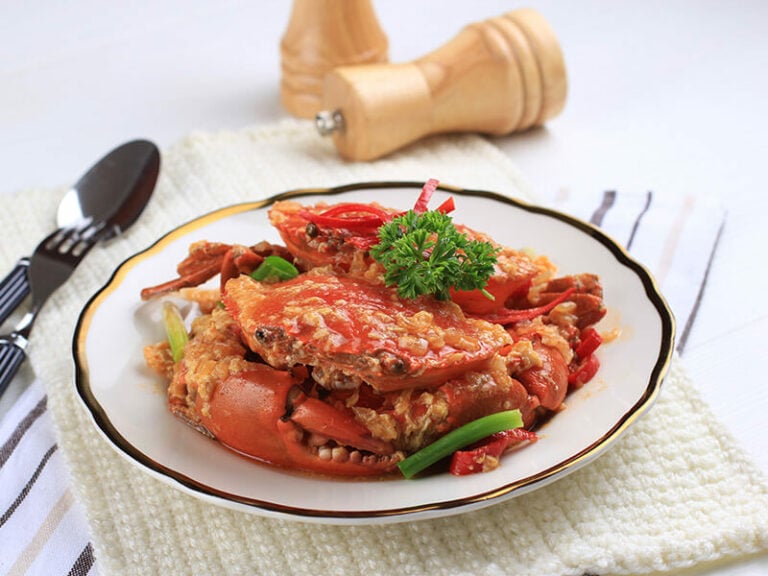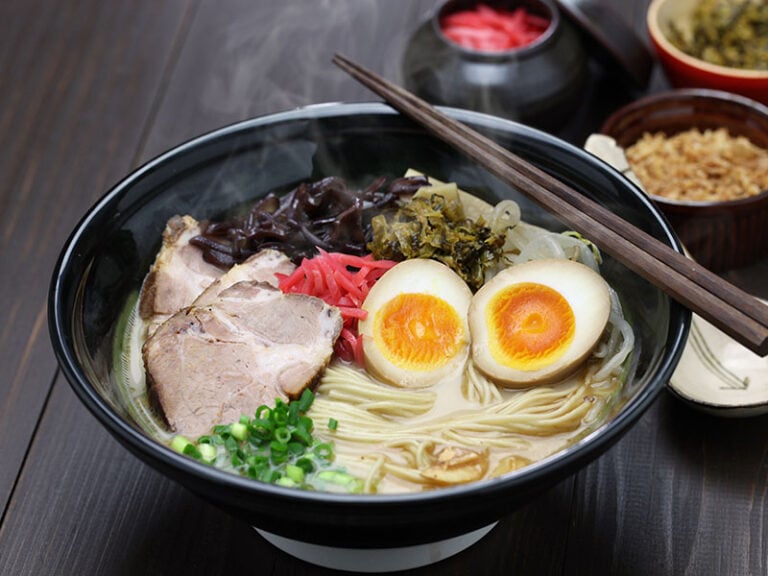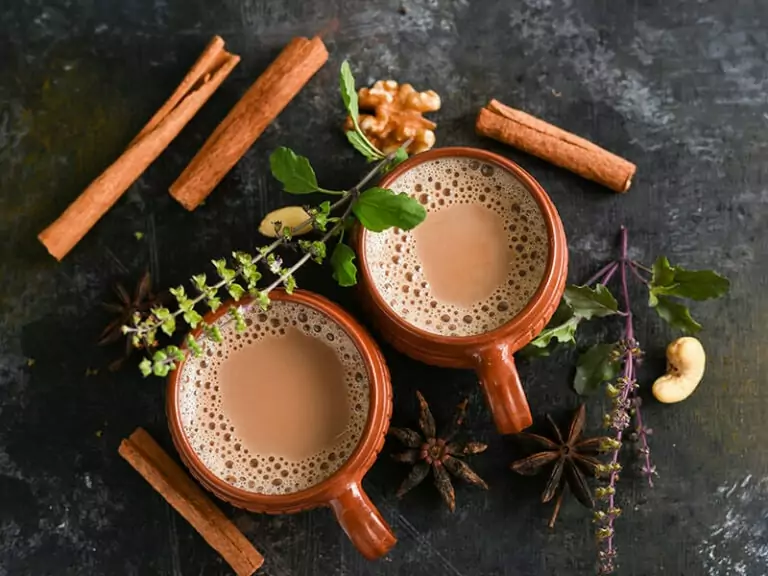Have you ever enjoyed a bite of Korean street food? By that, I mean South Korean cuisine because your chances of visiting North Korea are generally slim. In addition to K-pop, the country’s street food is an influential herald of Korean culture.
Big, gleaming South Korean cities are teeming with street food vendors, but rural towns are equally perfect heaven for enthusiasts. From the north to the south of the country, let’s discover inexpensive and flavorsome dishes in roadside stalls that will light up your day.
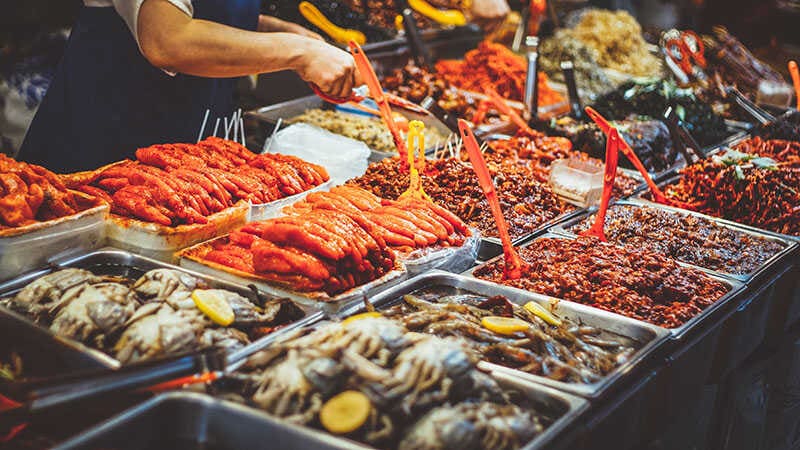
Indulge Yourself With These Korean Rice-Based Street Foods
If the West has wheat flour, the East responds with rice. The latter applies to various delicious delicacies in Korea, including street food items. A walk to any South Korean market will show you a host of yummy street foods made from this grain.
1. Tteokbokki – Spicy Rice Cakes
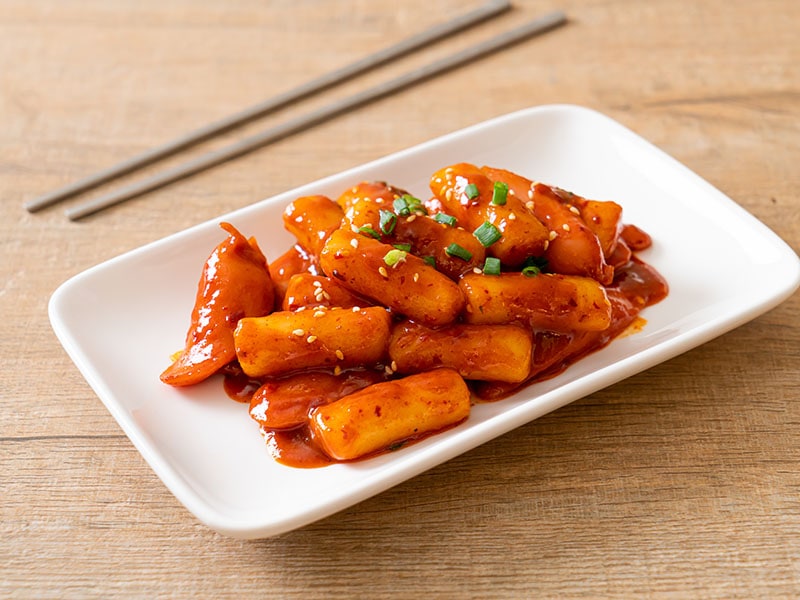
Let’s start the list with an affordable, universally beloved treat: Tteokbokki. It is spicy rice cakes that will stimulate your taste buds passionately. Eateries in Seoul offer the best Tteokbokki, but you will be pleased with the quality of rice cakes in other towns.
The spicy flavor comes from a large amount of tongue-burning chili sauce, and it may discourage certain people at first bite. However, when you become used to it, you will get hooked on the snack.
Do you know that Tteokbokki is also an exceptional Korean accompaniment with fried vegetables and meat? Another surprising fact is that this rice cake was one of the royal court’s dishes during the Joseon Dynasty.
Its precursor was a braised dish called Tteok-Jjim. In addition to rice cakes, it came with meat, eggs, and spices. That dish eventually got trimmed down into the present-day simpler yet more addictive form.
Observe how it feels like to eat Tteokbokki from an American perspective.
Best Tteokbokki in South Korea:
Address: 74-7 Yulgok-ro 3-gil, Jongno-gu, Seoul, South Korea
Time: 11 AM–9 PM every day
Website: https://mukshidonna1995ver0.weebly.com/
Phone: +8227238089
Address: 86-4 Samcheong-ro, Samcheong-dong, Seoul, South Korea
Time: 12–3 PM and 5–8 PM from Wednesday to Monday, closed on Tuesday
Facebook fanpage: www.facebook.com/
Phone: +8227333106
Address: South Korea, Seoul, Mapo-gu, Wausan-ro 21-gil, 31-10 1층
Time: 11 AM–11 PM every day
Phone: +82222455222
Approximate cost for one (all three): KRW 12,000 – KRW 30,000 (USD 10 – 25)
2. Mayak Gimbap – Korean Seaweed Rice Roll
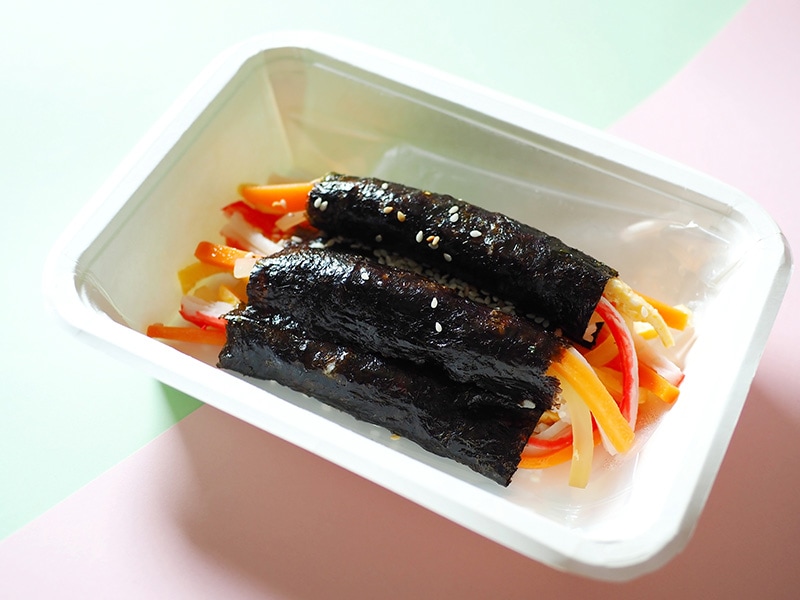
You don’t have to be well-versed in Korean cuisine to know that seaweed is a vital part of many Korean dishes. The marine plant possesses a salty taste and an elastic texture, so it supplies a dramatic increase in culinary enjoyment. A convincing example of that quality is Gimbap.
It is a roll consisting of cooked rice, sliced veggies, seafood, all wrapped around by nori sheets. But you’re not going to find the conventional big version at roadside stalls. Korean vendors usually sell the most common variety of the dish: the bite-sized Mayak Gimbap.
It is much smaller, usually a quarter of the size of a normal Gimbap. Consequently, the snack has an alternative name with a very adorable connotation: Kkoma Gimbap (“baby gimbap”). You can easily make this version at home with a high-tech rice cooker made in Korean.
You would be surprised to know that the original name Mayak Gimbap means “narcotic gimbap” in Korean. Don’t be alarmed: it just refers to how addictively yummy it is. Mayak Gimbap always goes with a special soy sauce enhanced with ground sesame seeds, vinegar, and mustard.
Best Mayak Gimbap in South Korea:
Address: 403-23 Dongho-ro, Jongno 5(o)-ga, Jongno-gu, Seoul, South Korea
Time: 9 AM–8:30 PM every day
Phone: +82222738330
Address: 88 Changgyeonggung-ro, Jongno-gu, Seoul, South Korea
Time: 9 AM–6 PM from Monday to Saturday, closed on Sunday
Website: http://kwangjangmarket.co.kr/
Phone: 0222670291
Approximate cost: KRW 2000 (USD 1.6) for 8 rolls
3. Tteok-Kkochi – Korean Rice Cake Skewers
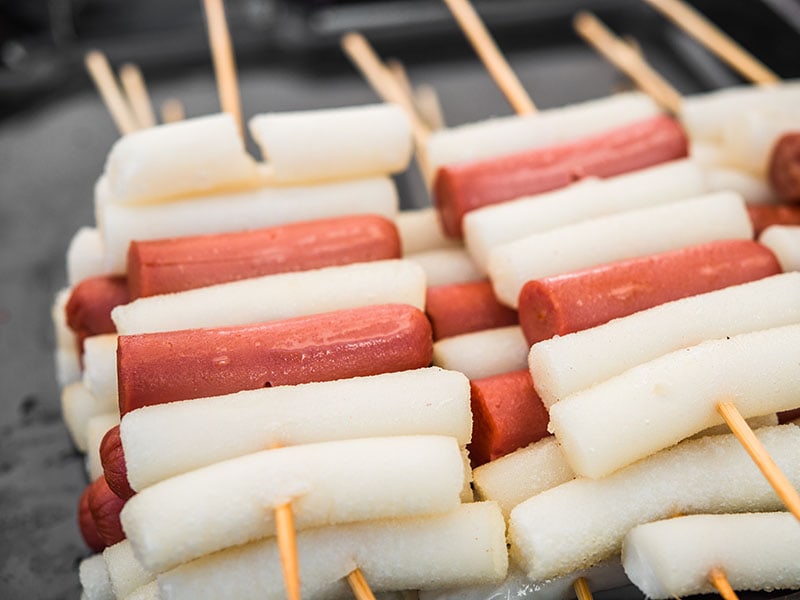
Tteokbokki doesn’t hold the monopoly on Korean spicy rice dishes. Let me present you Tteok-Kkochi, another well-liked rice-based delight that will make you feel really hot.
The dish includes Tteok (rice cakes) that are skewered together with bamboo sticks. After the cakes are grilled in a pan, the next step is to brush them with Gochujang, a traditional fermented chili paste. The combination results in a pleasantly sweet, spicy, and sour snack.
You can enjoy plain Tteok-Kkochi or put on your favorite garnish. Choices are numerous: walnuts, seaweed, or boiled eggs. Kid-friendly versions usually reduce spiciness to protect the young ones’ tender tongues.
Check out this creative recipe that refines Tteok-Kkochi with cheese.
Best Tteok-Kkochi in South Korea:
Address: 24 Hongik-ro 5an-gil, Mapo-gu, Seoul, South Korea
Time: 10 AM–10 PM every day
Phone: +8223241107
Address: 16 Insadong 3-gil, Jongno-gu, Seoul, South Korea
Time: 11 AM–10 PM every day
Phone: +8227259449
Approximate cost for one (both of them): KRW 3000 – 6000 (USD 2.5 – 5)
4. Mandu – Korean Dumpling
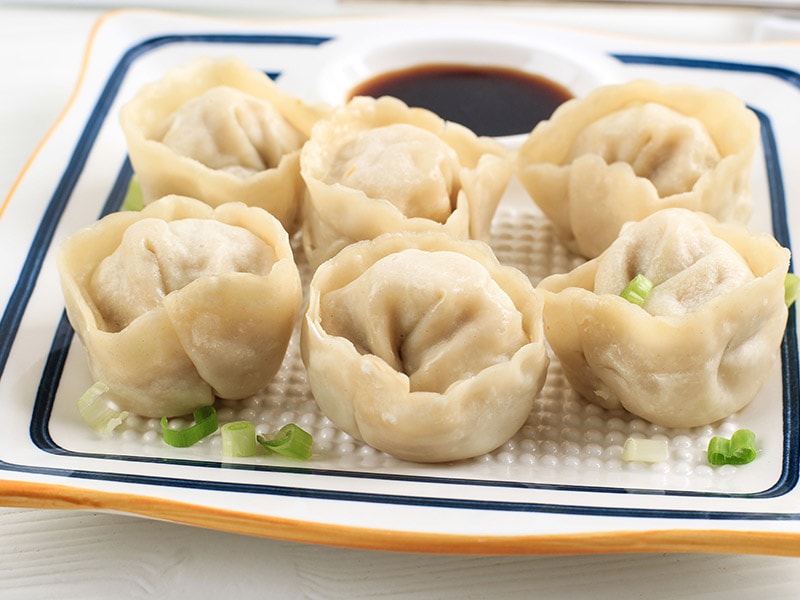
You can guess right from its name that this dish is one of the highest-rating Chinese recipes globally. According to legends, a Chinese general invented it during the period of the Three Kingdoms thousands of years ago. Then, the Mongolians brought dumplings to western Korea.
For a long time, Mandu was a signature dish of Korean royal court cuisine. But in the present absence of royalty, it ranks as a common fare for people from all walks of life. There are enough varieties to suit everybody’s needs, like Gun-Mandu (fried) or Jjin-Mandu (steamed).
Mandu is made from dough, minced pork, glass noodle, and spices. Ensure that you try the truly Korean variation with kimchi filling. Whatever you buy, the vendor will supply you with a takeaway box for ease of consumption.
Best Mandu in South Korea:
Address: 29 Myeongdong 10-gil, Jung-gu, Seoul, South Korea
Time: 10:30 AM–9 PM every day
Website: http://www.mdkj.co.kr/
Phone: +8227765348
Approximate cost for one: KRW 12,000 – KRW 30,000 (USD 10 – 25)
Address: 393-1 Seogyo-dong, Mapo-gu, Seoul, South Korea
Time: 24 hours every day
Website: http://www.mapomandu.com/
Phone: +8223339842
Approximate cost for one: KRW 2500 – 12,000 (USD 2.09 – 10)
Address: 11-3 Insadong 10-gil, Gwanhun-dong, Jongno-gu, Seoul, South Korea
Time: 11:30AM–9:30PM from Monday to Saturday, 11:30AM–8PM on Sunday
Website: http://www.koong.co.kr/
Phone: +8227339240
Approximate cost for one: KRW 12,000 – KRW 30,000 (USD 10 – 25)
5. Garaetteok – Cylinder-Shaped Rice Cakes
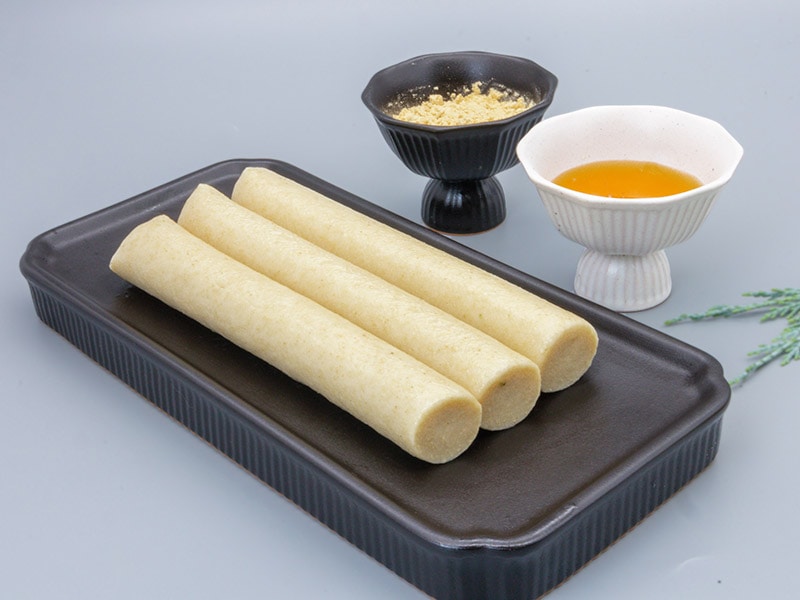
If you’re afraid of heat, you can find these rice cakes minus the spicy sauce at many street food carts. Known as Garaetteok, the dish relies on its innate sweetness and gluten-free quality to lure its guests.
Vendors usually grill Garaetteok on charcoal until crisp on the outside. But when you dip the cylindrical rice cakes in honey or soy sauce, you will be struck by how soft and fluffy they are.
Garaetteok is also a principal ingredient for Tteokguk (rice cake soup), a must-have Korean starter for the New Year celebration. The role shows how much these milky-white rice cakes mean to Korean culture.
Best Garaetteok in South Korea
Address: 88 Changgyeonggung-ro, Jongno-gu, Seoul, South Korea
Time: 9 AM–6 PM from Monday to Saturday, closed on Sunday
Website: http://kwangjangmarket.co.kr/
Phone: 0222670291
Address: Myeongdong-gil, Myeong-dong, Jung-gu, Seoul, South Korea
Time: 9 AM–9 PM every day
Address: 21 Namdaemunsijang 4-gil, Jung-gu, Seoul, South Korea
Time: 9 AM–9 PM from Monday to Saturday, 11 AM–8 PM on Sunday
Website: http://www.namdaemunmarket.co.kr
Phone: +8227532805
Approximate cost for one (all three): KRW 3000 (USD 2.5)
Hearty Korean Street Foods With Meat And Fish To Savor
Chicken is one of the most popular meat ingredients you’re going to experience in Korean street food. But the country has a few exotic dishes that only people with nerves of steel can try.
6. Eomuk Bokkeum – Stir-Fried Fish Cake
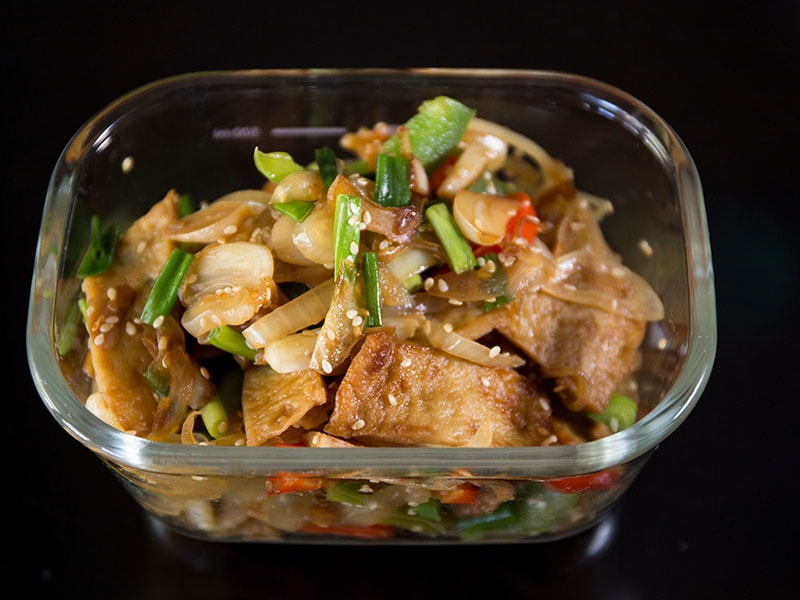
Because South Korea is on a peninsula, there is no shortage of fresh fish. The food is famous in all parts of Korean cuisine, from main dishes to street food. So the fish-based Eomuk Bokkeum is naturally a common sight in the country’s street food scene.
The dish’s star is Eomuk, a fishcake or deep-fried ground fish paste. The word is borrowed from a Japanese stew called Oden. Fish with a low fat content like Corvina or cuttlefish is the best ingredient to prepare the fish cake.
There are many methods to cook Eomuk into delicious dishes. Nevertheless, Koreans love to stir-fry slices of it with veggies and dip it in a soy sauce infused with Gochujang to create Eomuk Bokkeum. It is a heart-warming way to pass a chilly night in the country.
For the best Eomuk experience, make your way to the port city of Busan, South Korea’s second-most populous city. Among its numerous tourist attractions is the enormous number of variations of Eomuk available for sale at food stalls and carts.
It is an easy task to cook homemade Eomuk Bokkeum with this tutorial.
Best Eomuk Bokkeum in South Korea
Address: 8 Dongmak-ro 3-gil, Hapjeong-dong, Mapo-gu, Seoul, South Korea
Time: 10 AM–10 PM every day
Phone: +8223383777
Address: 36 Taejong-ro 99beon-gil, Yeongdo-gu, Busan, South Korea
Time: 9 AM–8 PM every day
Website: http://www.samjinfood.com/
Phone: +82514125468
Approximate price for one fish cake in the country: less than KRW 3000 (USD 2.5)
7. Sundae – Korean Blood Sausage
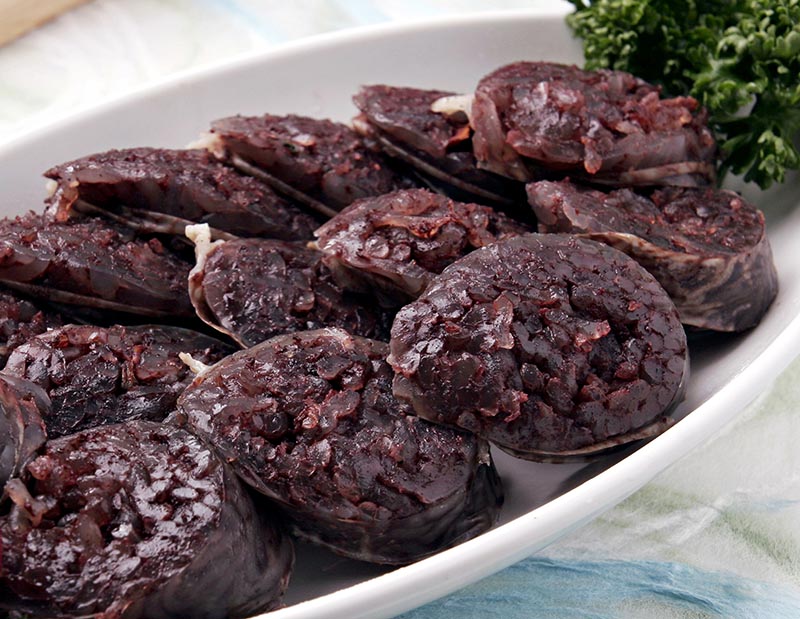
Don’t mistake this impressive Korean blood sausage with the well-known favorite ice cream dessert in Western cuisine. Anyone wishing to avoid the confusion can use another Anglicized form of the name, Soondae.
Similar to blood sausages all over the world, Sundae invokes mixed feelings at first bite. But once you get acquainted with its distinct, savory taste, you will understand why locals love this mixture of minced meat, vegetables, rice, and blood.
Many unorthodox Korean dishes gained popularity after the Korean War, such as Sundae. This one once was a dish belonged to North Korea. However, it’s now a great street food item in South Korea.
Best Sundae in South Korea:
Sundae Town
Address: 08776-14, Sillim-ro 59-gil, Gwanak-gu, Seoul
Time: 11:30 AM–01 AM every day
Approximate cost for one: KRW 5,000 – 7,500 (USD 4.17 – 6.25)
8. Beondegi – Crunchy Silkworm Pupa
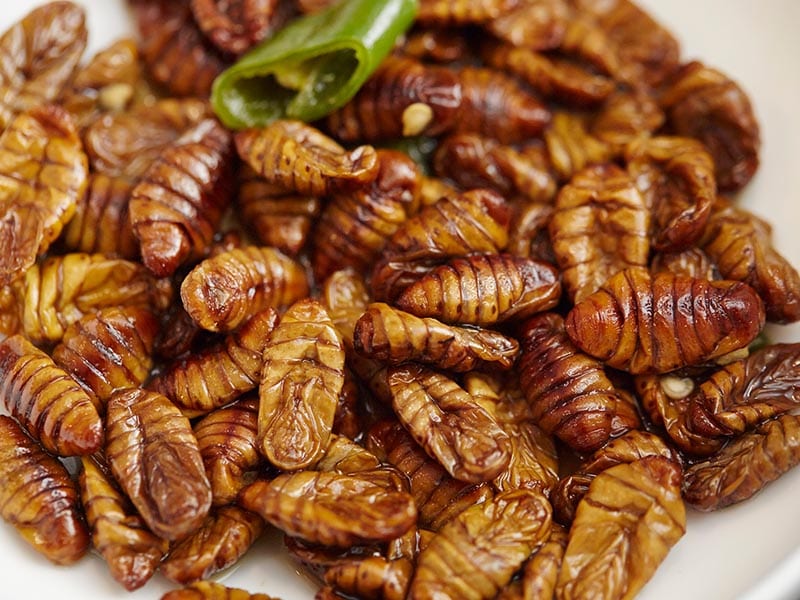
Some scientists say insects are the meat of the future since they score extremely high in terms of resource efficiency. If so, Koreans are well ahead of that tendency, for they have eaten Beondegi, a snack from silkworm pupae, for centuries.
Needless to say, it is an acquired taste. But you will be blown away to know that Beondegi is a quotidian dish for sale at countless Korean food stalls and restaurants. It is even present in grocery stores as canned food.
Fried or steamed silkworm pupae are usually sold in paper cups, waiting for people to skewer them with toothpicks to relish their succulent, milky flesh. The snack has a long history, but its popularity didn’t skyrocket until the period of scarcity following the devastating Korean War.
Beondegi is more delicious than you think.
Best Beondegi in South Korea
Address: 88 Changgyeonggung-ro, Jongno-gu, Seoul, South Korea
Time: 9 AM–6 PM from Monday to Saturday, closed on Sunday
Website: http://kwangjangmarket.co.kr/
Phone: 0222670291
Address: 18 Jahamun-ro 15-gil, Jongno-gu, Seoul, South Korea
Time: 7 AM–9 PM every day, closed on Sunday
Address: 21 Namdaemunsijang 4-gil, Jung-gu, Seoul, South Korea
Time: 9 AM–9 PM from Monday to Saturday, 11 AM–8 PM on Sunday
Approximate price: KRW 2,000 (USD 1.67) for an 8-oz paper cup of Beondegi
9. Dakgangjeong – Korean Fried Chicken
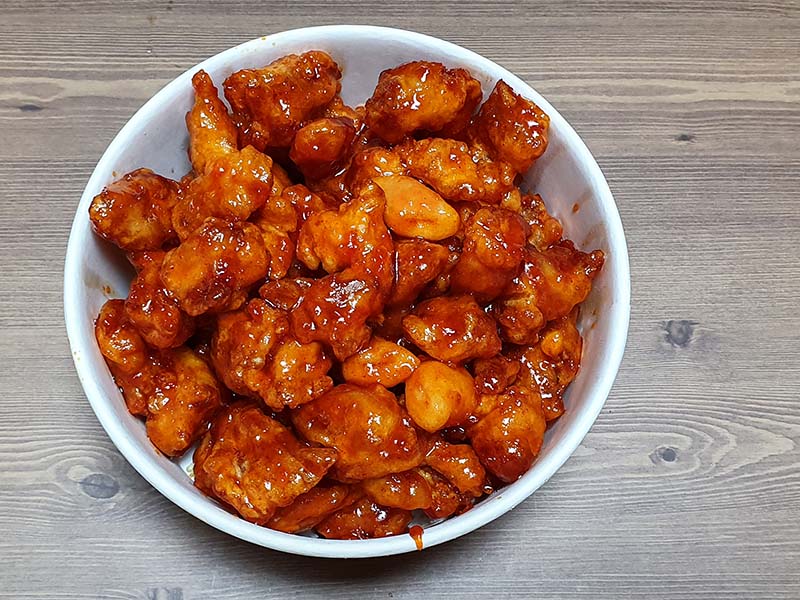
If you’re looking for a nourishing specialty from Korea for a light snack, Dakgangjeong is your friend. Almost all Korean food stalls and restaurants offer disparate variations of this fried chicken dish.
You can cook Dakgangjeong from chicken wings, breasts, or thighs. The recipe will still be the same. But the important thing is to soak the chicken pieces in a marinade of garlic and ginger before coating them with a thin layer of finely grated potatoes.
You can apply the Korean secret to creating juicy, tender Dakgangjeong by drenching the chicken in milk before taking the above steps. Anyway, the only suitable condiment to pair with the finger-licking fried chicken sprinkled with chopped nuts is the spicy Gochujang sauce.
What are the differences between Korean fried chicken and American ones?
Best Dakgangjeong in South Korea
Address: 371-3 Seogyo-dong, Mapo-gu, Seoul, South Korea
Time: 12 PM – 12 AM every day
Website: http://www.kyochon.com/
Phone: +8223381300
Approximate cost for one serving: KRW 15,000 – 18,000 (USD 12.5 – 15)
Address: 3 Samseong-ro 96-gil, Gangnam-gu, Seoul, South Korea
Time: 4 PM–2 AM every day
Website: http://www.kkanbu.co.kr/
Phone: +8225667088
Approximate cost for one serving: KRW 10,000 – 20,000 (USD 8.35 – 16.67)
BHC Chicken Myeongdong Head Office
Address: 21 Myeongdong 7-gil, Jung-gu, Seoul, South Korea
Time: 1 PM–1 AM every day
Website: http://www.bhc.co.kr/
Phone: +8223197033
Approximate cost for one surviving: KRW 17,000 – 19,000 (USD 14.17 – 15.84)
10. Bindaetteok – Mung Bean Pancakes
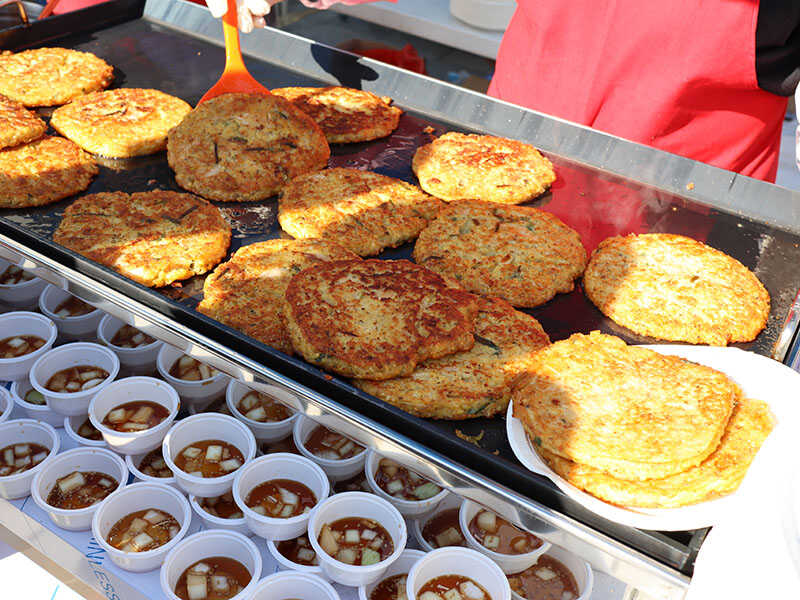
This dish comes from the historic Pyongan Province, where North Korea’s capital Pyongyang is based. It first appeared in the mid-17th century. These days, you can find the snack at many carts along with traditional markets in South Korea.
Bindaetteok uses ground mung beans, pork, and cabbage kimchi. Mung beans are the spirit of this fried pancake, imparting to it a rich flavor and high nutritional value. In addition, the kimchi gives a unique Korean vibe to the pancake.
The best way to enjoy Bindaetteok is to eat it hot out of the frying pan with soy sauce. Formerly, only the wealthy could eat pork pancakes as poor people could only munch one plain Bindaetteok. Fortunately, the distinction is now a thing of the past.
Best Bindaetteok in South Korea
Address: 3-1 Jahamun-ro 1-gil, Naeja-dong, Jongno-gu, Seoul, South Korea
Time: 1 PM–2 AM every day
Phone: +8227330435
Address: 5 Jong-ro 32-gil, Jongno 5(o)-ga, Jongno-gu, Seoul, South Korea
Time: 8 AM–11 PM every day
Phone: +82222645057
Address: 7 Jong-ro 32-gil, Jongno-gu, Seoul, South Korea
Time: 8 AM–10 PM every day
Phone: +82222670614
Approximate cost for one pancake (all three): KRW 4000 – 6000 (USD 3.34 – 5)
11. Sannakji – Raw Baby Octopus
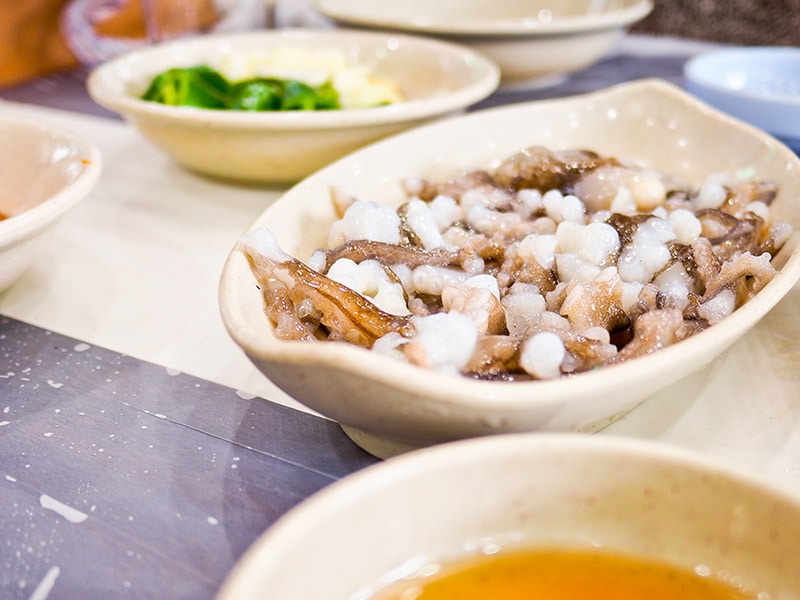
You will be hard-pressed to decide whether Beondegi or this one is harder to stomach. Sannakji revolves around octopus; the only strange thing is that it is served 100% raw.
In fact, the dish uses raw octopus tentacles that still twitch around on your plate. The “nakji” word refers to the small local octopus that Koreans eat. They chop the seafood into small pieces and sprinkle them with sesame oil and seeds.
If you can overcome your apprehension, the chewy texture and salty, umami-packed meatiness of octopus will leave an unforgettable impression. Improve your experience by eating Sannakji with spicy sauce and green tea.
Wondering what it feels like to eat raw octopus? See how this Sannakji challenge unfolds.
Best Sannakji in South Korea
Address: 674 Nodeul-ro, Dongjak-gu, Seoul, South Korea
Time: open 24 hours every day
Phone: +82222548000
Approximate cost for one octopus: KRW 10,000 (US 8.34)
12. Dakkochi – Korean Chicken Skewers
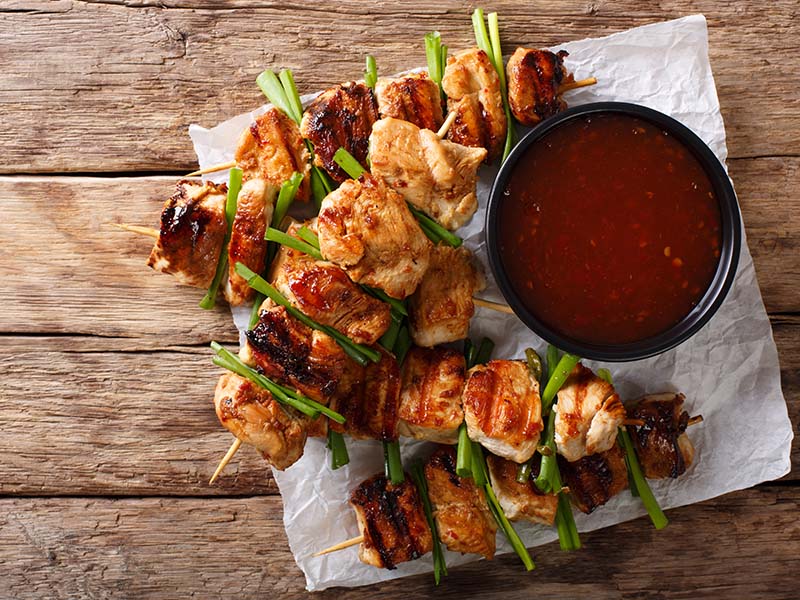
Everyone loves savory grilled chicken, so why not level up the flavor by trying this Korean skewered version, Dakkochi?
Walking around Korean streets while holding a stick of spicy chicken is an amazing experience, right? Although skewered chicken is one of the most popular dishes in Asian countries, this Korean version is still well worth your money.
Delicious Dakkochi depends on the quality of the chicken. Vendors season chicken pieces with spices and soy sauce, then charcoal-grill them alongside onions right in front of onlooking customers.
Like other Korean fried/grilled dishes, Dakkochi requires an accompanying spicy sauce for the best effect. You can also ask the vendor for a special firebrand variation for extreme spiciness.
Best Dakkochi in South Korea
Address: 83-9 Myeong-dong, Jung-gu, Seoul, South Korea
Time: 5 PM – 11 PM every day
Address: 365-8 Seogyo-dong, Mapo-gu, Seoul, South Korea
Time: 12:00 PM – 2 AM every day
Address: 21 Namdaemunsijang 4-gil, Jung-gu, Seoul, South Korea
Time: 9 AM–9 PM from Monday to Saturday, 11 AM–8 PM on Sunday
Approximate cost for each stick (all three): KRW 500 (USD 0.42)
Journey To The Diverse World Of Korean Pastries
Tasting Korean flavorful pastries is a must if you seek the fullest Korean culinary cuisine. Many dishes not only have a sublime taste but also look very adorable.
13. Hodu-Gwaja – Korean Walnut Pastry
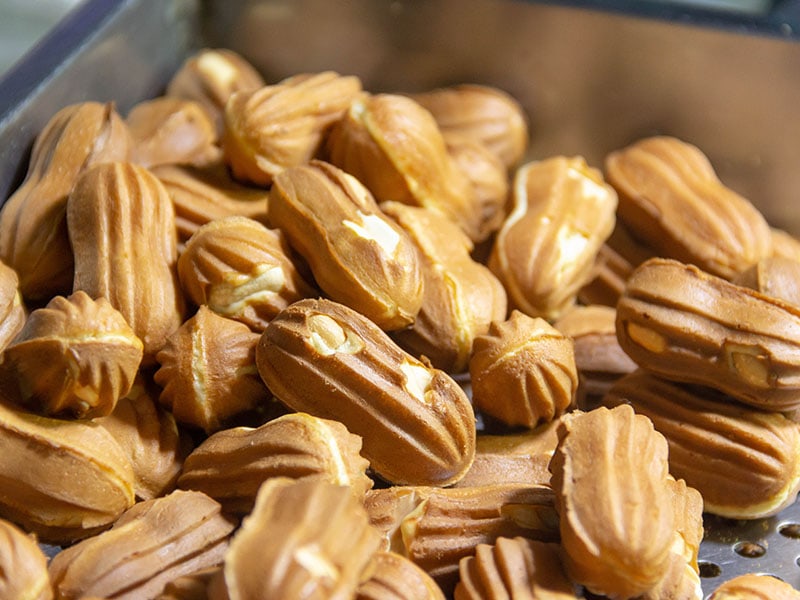
This pastry is a newcomer. A couple living in Cheonan, near Seoul, drew inspiration from traditional Korean sweets to invent Hodu-Gwaja (Korean walnut pastry ) in 1934. The cookie is now a common wintertime snack across the entire country.
The exterior of Hodu-Gwaja is a soft dough of flour and pounded walnuts. Inside, you will find a filling based on chopped walnuts and a red bean paste. No one knows why but you’re more likely to buy Hodu-Gwaja in train stations and from catering trolleys on the train.
Eating Hodu-Gwaja in Cheonan is a special memory.
Best Hodu-Gwaja in South Korea
Hakhwa Hodu-gwaja Cheonan Terminal
Address: South Korea, Chungcheongnam-do, Cheonan-si, Dongnam-gu, Mannam-ro, 62 KR
Time: 7:30 AM–9:30 PM every day
Website: http://www.hakhwa1934.com/
Phone: +82415518596
Approximate price for 12 pieces: KRW 6,000 (USD 5)
14. Bungeo-Ppang – Korean Fish-Shaped Pastry
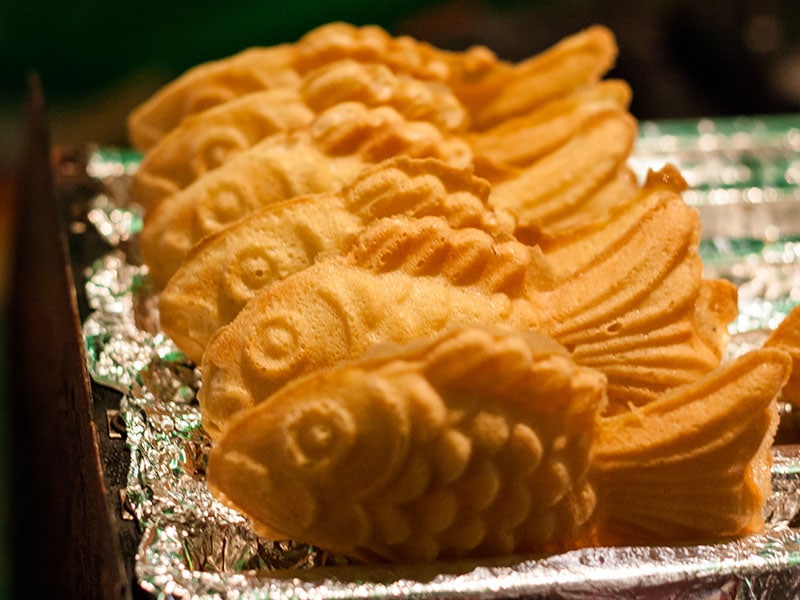
Between 1910 and 1945, Korea was under Japanese rule. The period witnessed much turbulence but also some great culinary exchange between Japan and Korea.
Around the 1930s, the Japanese fish-shaped waffle known as Taiyaki was brought to the peninsula and took on a local name, Bungeo-ppang.
There is nothing spectacular about the ingredients, just a fluffy, slightly crispy yeast dough enveloping a red bean paste. What is special about Bungeo-ppang is its attractive shape of a tai (red seabream)-like shape that bakers create with a special mold.
Best Bungeo-ppang in South Korea
Address: 21 Namdaemunsijang 4-gil, Jung-gu, Seoul, South Korea
Time: 9 AM–9 PM from Monday to Saturday, 11 AM–8 PM on Sunday
Address: 10-18 Dasan-ro 33-gil, Sindang-dong, Jung-gu, Seoul, South Korea
Time: 24 hours every day
Address: 200 Achasan-ro, Gwangjin-gu, Seoul, South Korea
Time: 11 AM–10 PM every day
Approximate cost for one medium-sized cake (all three): KRW 330 (USD 0.28)
15. Hotteok – Korean Sweet Pancakes
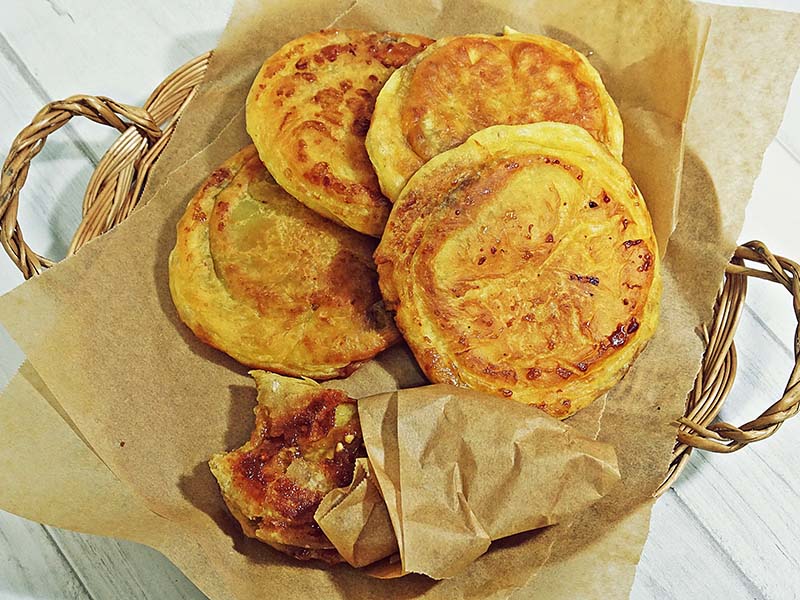
Wandering through the streets of Korean towns, you can easily buy Korean stuffed pancakes from any street food vendor. The local name for it is Hotteok (or Hoeddeok), and it is always hot. While Koreans eat Hotteok year-round, it is more popular in the wintertime.
The star of Hotteok is its sweet filling that has cinnamon, chopped walnuts, and honey. Sometimes, cooks substitute them with ice cream, cheese, or seasoned glass noodles for a more exotic taste. Outside is the leavened dough sweetened with milk and of various sizes.
Hotteok appears to be an adaptation of a similar pancake that Chinese Koreans contributed. In the 19th century, many Chinese merchants settled in Korea and brought Chinese savory meat filling pancakes. However, they opted for a sweeter version to suit the local taste.
Join in searching for the best Hotteok in Seoul here.
Best Hotteok in South Korea
Address: 20 Gullebang-ro 7-gil, Mapo-gu, Seoul, South Korea
Time: 10:30 AM–9 PM from Tuesday to Saturday, 12 AM–9 PM on Sunday and Monday
Phone: +8250713271227
Address: South Korea, Seoul, Mapo-gu, Nogosan-dong, 40-15번지 1층
Time: 12 AM–10:30 PM every day
Instagram fanpage: https://instagram.com/
Phone: +8250714887474
Approximate cost for one pancake in the country: KRW1,500 – 2,500 (USD 1.25 – 2.09)
16. Jeon – Korean Savory Pancake
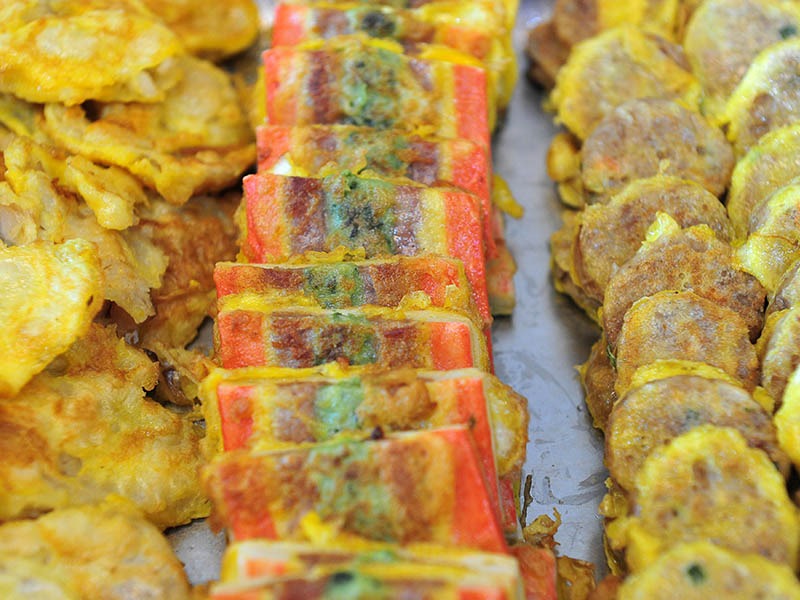
Tourists visiting this beautiful country can’t help tasting Jeon, an amazing Korean appetizer in disguise as street food. Whatever your taste may be, Jeon is versatile and can reinvent itself to please you.
In essence, it is a wheat flour-based fritter that can contain all kinds of fillings. The meaty version is called Yukjeon; Saengseon-jeon is the term for Jeon with fish, while veggie Jeon is called Chaeso-jeon.
Further down the line, you can enjoy a special sweet variation called Hwajeon. It means “flower Jeon” and includes real edible flower petals. When you’re treating yourself with various kinds of Jeon, remember that it was once a principal part of the Korean royal menu.
Best Jeon in South Korea
Address: 19 Dongjak-daero 7-gil, Sadang-dong, Dongjak-gu, Seoul, South Korea
Time: 11:30 AM–1 AM from Monday to Saturday, 3:30 PM–1 AM on Sunday
Phone: +8225811419
Address: 20 Donhwamun-ro 11-gil, Jongno-gu, Seoul, South Korea
Time: 2 PM–9 PM from Monday to Saturday, closed on Sunday
Phone: +8227472324
Address: 11-4 Sincheon-dong, Songpa-gu, Seoul, South Korea
Time: 11 AM–9 PM from Monday to Saturday, closed on Sunday
Website: http://www.jeonssam.co.kr/
Phone: +8224241202
Approximate cost for one pancake in the country: KRW 6,000 – 8,000 (USD 5 – 6.67)
17. Gukhwa-Ppang – Chrysanthemum Bread
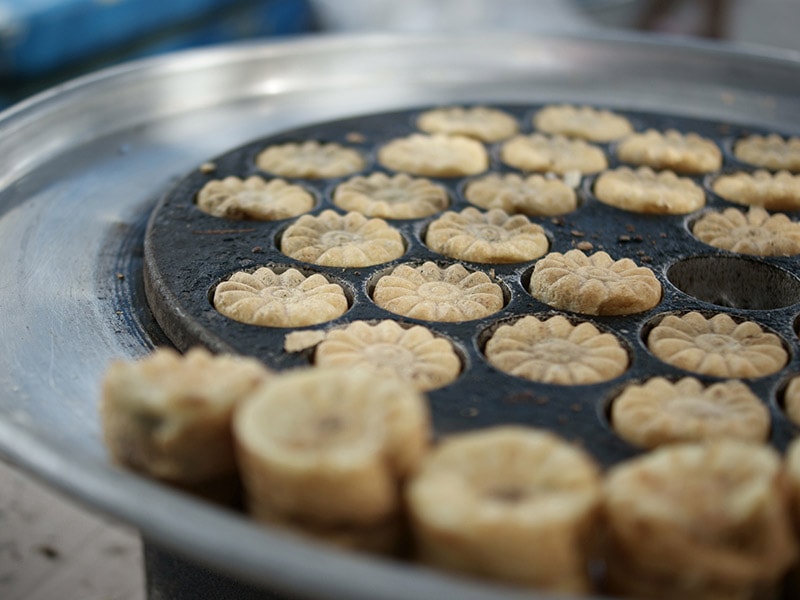
If you enjoy “flower Jeon” and want to taste even more flower-based dishes, this one will disappoint you. Gukhwa-Ppang means “Chrysanthemum bread” in Korean. But it owes the name to its distinct shape, not its ingredient.
Gukhwa-Ppang consists of a sweet red bean paste stuffed inside a flower-shaped pastry created with a special mold. It is usually served warm. Besides bean paste, you can find other filling choices ranging from nuts to honey.
Best Gukhwa-Ppang in South Korea
Address: 21 Namdaemunsijang 4-gil, Jung-gu, Seoul, South Korea
Time: 9 AM–9 PM from Monday to Saturday, 11 AM–8 PM on Sunday
Website: http://www.namdaemunmarket.co.kr/
Phone: +8227532805
Address: 88 Changgyeonggung-ro, Jongno-gu, Seoul, South Korea
Time: 9 AM–6 PM from Monday to Saturday, closed on Sunday
Website: http://kwangjangmarket.co.kr/
Phone: 0222670291
Approximate cost for one cake in the country: KRW 200 (USD 0.17)
18. Kkwabaegi – Twisted Korean Donuts
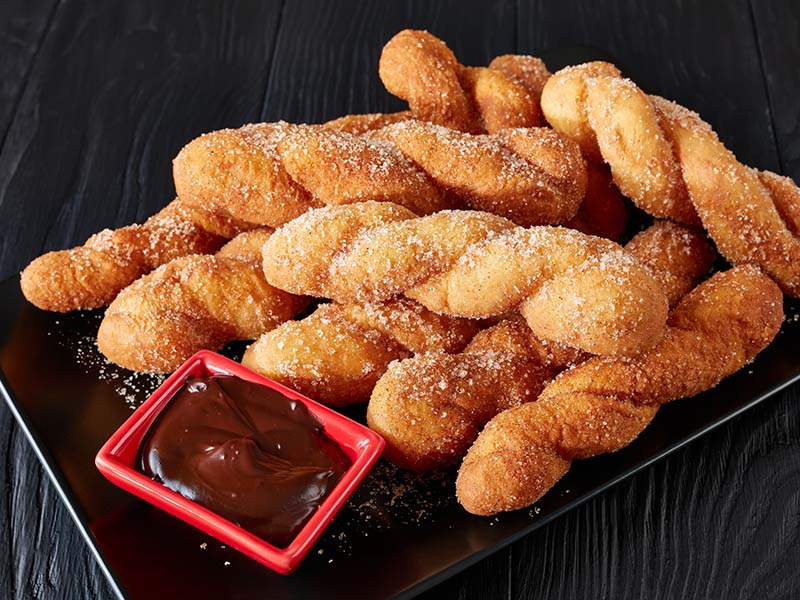
Korean street foods come in many shapes and flavors, but one universal rule applies. Thou shalt not eat them cold; in other words, you have to eat them hot out of the pot or pan. The command is best illustrated with Kkwabaegi, the Korean twisted donuts.
The ingredients are easy to assemble, just yeast flour and other basic stuff. The devil is in kneading the dough into attractive twisted shapes and frying the doughnuts until they are fluffy and crispy.
The good news is that you can freeze them for long-term storage. To savor these donuts’ fatty deliciousness, all you need to do is to heat them with a microwave.
Bring the taste of Kkwabaegi to your home with this detailed walkthrough.
Best Kkwabaegi in South Korea
Address: 88 Changgyeonggung-ro, Jongno-gu, Seoul, South Korea
Time: 9 AM–6 PM from Monday to Saturday, closed on Sunday
Website: http://kwangjangmarket.co.kr/
Phone: 0222670291
Address: 18-221 Euljiro 6(yuk)-ga, Jung-gu, Seoul, South Korea
Time: 8 AM–2 AM every day
Phone: +821096714249
Address: South Korea, Seoul, Jung-gu, Chungmuro 2(i)-ga, 8-3-ga
Time: 12 AM–1 PM and 3 PM–12 AM every day
Approximate cost for one donut in the country: KRW 1000 (USD 0.84)
19. Gyeran-Ppang – Korean Egg Cake
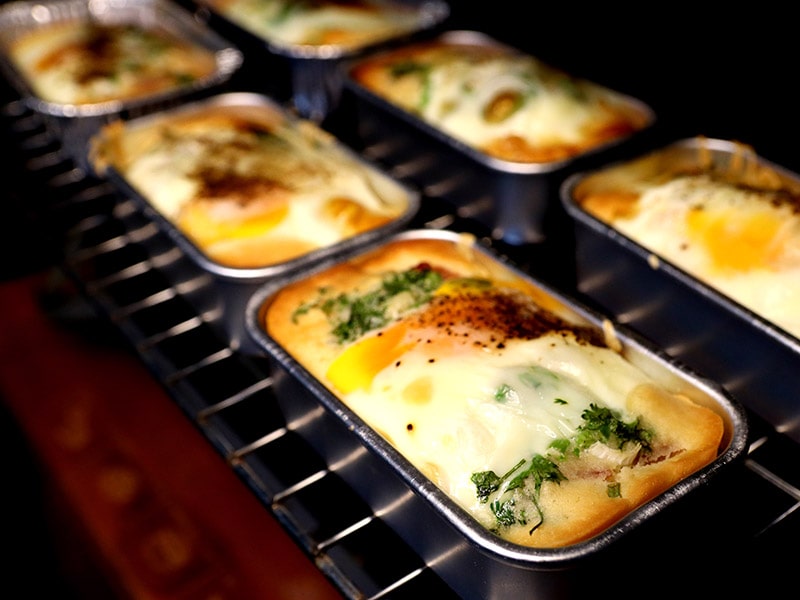
Many great Korean street foods are deep-rooted in the country’s tradition, but that isn’t the norm.
Many dishes arrive at the scene relatively late (from a culinary perspective) but lose little time in achieving superstar status. I will illustrate it with the example of Gyeran-ppang, a Korean egg cake.
This wonderful sweet treat from Korea first appeared in 1984 near a university in Incheon, South Korea’s third-largest city. At present, the cake is one of the most beloved street foods in the country, available at countless food stalls and roadside eateries.
Its magic lies in the vanilla-flavored, muffin-like bread batter enhanced with a cracked egg on top. The egg bread is cooked until golden, creamy, and packed with a fatty, irresistible aroma. The original version used a sweet red bean paste that vendors discarded in favor of nutty eggs.
Best Gyeran-ppang in South Korea
Address: 139 Dasan-ro, Sindang 2(i)-dong, Jung-gu, Seoul, South Korea
Time: 8 AM–10 PM every day
Phone: +82222319380
Address: 159 Banghak-ro, Dobong-gu, Seoul, South Korea
Time: 9 AM–9 PM from Monday to Saturday, closed on Sunday
Phone: +8229549280
Approximate cost for one cake in the country: KRW 1,000 – 3,000 (USD 0.84 – 2.51)
Other Korean Street Foods You Can’t Walk Away
The next stop of this street food tour will cover delicious dishes you can’t help eating to your heart’s content. In case you are averse to fried, greasy foods, there are always healthier options.
20. Gilgeori Toast – Korean Street Toast
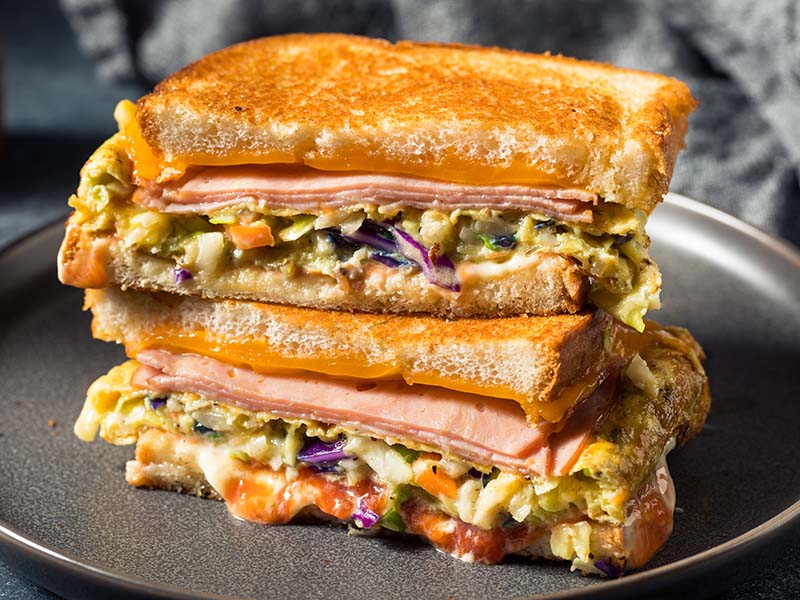
Gilgeori toast is just some plain, ordinary toast, right? You can’t be more wrong. Literally “street toast”, the dish is a mouth-watering combination of simple, easy-to-find ingredients whose infusion will open your eyes to a new cooking possibility.
This hearty, on-the-go Korean breakfast treat consists of toasted bread slices, omelets, shredded cabbage, and some other veggies. Garnish it with sugar and a drizzle of ketchup. Your killer sandwich is good to go.
You can detect all kinds of tastes in one bite – the sweetness of sugar, nuttiness of the bread, umami of eggs, you name it. Gilgeori toast is a quick meal tremendously popular with Korean students and workers, but there is nothing wrong with you joining them in appreciating the dish.
Observe a Gilgeori toast master at work here.
The best Gilgeori toast in South Korea
Address: 105 Toegye-ro, Chungmuro 1(il)-ga, Jung-gu, Seoul, South Korea
Time: 7 AM–8 PM from Monday to Saturday, closed on Sunday
Website: http://www.isaac-toast.co.kr/
Phone: +8227523002
Address: 30-3 Supyo-ro 28-gil, Jongno-gu, Seoul, South Korea
Time: 12 PM–9 PM every day
Instagram fanpage: https://instagram.com/
Phone: +8227660627
Approximate cost for a toast in the country from KRW 3000 (USD 2.5)
21. Dalgona Candy – Sugar Candy

This type of candy is a tasty little piece of art. It enjoyed massive popularity in the 1970s and 1980s in South Korea before experiencing a decline. But thanks to its appearance in some Korean hit series, the candy is making an impressive comeback.
Dalgona candy (or Ppopgi) is merely a mixture of baking soda and melted sugar. But its beauty lies in the wonderful characteristic that when the flour is still soft, you can draw any shape on the candy, such as an umbrella, heart, or star. The picture will stay when the candy hardens.
Therefore, the dish is both a delicious Korean dessert and an interesting game. Many vendors challenge their customers to break off the Dalgona candy and still keep its shape intact, with free candies as a reward.
Sometimes, you can come across a well-loved Korean beverage called Dalgona coffee. The name is due to a similarity in the taste and appearance of the two of them. The coffee contains no Dalgona at all.
Learn how to make the famous Dalgona candy here.
Best Dalgona Candy in South Korea
Address: 18 Jahamun-ro 15-gil, Jongno-gu, Seoul, South Korea
Time: 7 AM–9 PM every day, closed on Sunday
Website: http://tonginmarket.co.kr/
Phone: +8227220911
Address: 10-18 Dasan-ro 33-gil, Sindang-dong, Jung-gu, Seoul, South Korea
Time: 24 hours every day
Address: 21 Namdaemunsijang 4-gil, Jung-gu, Seoul, South Korea
Time: 9 AM–9 PM from Monday to Saturday, 11 AM–8 PM on Sunday
Website: http://www.namdaemunmarket.co.kr/
Phone: +8227532805
Approximate cost for one piece in the country: KRW 2000 (USD 1.67)
22. Twigim – Korean Fried Food/Korean Tempura
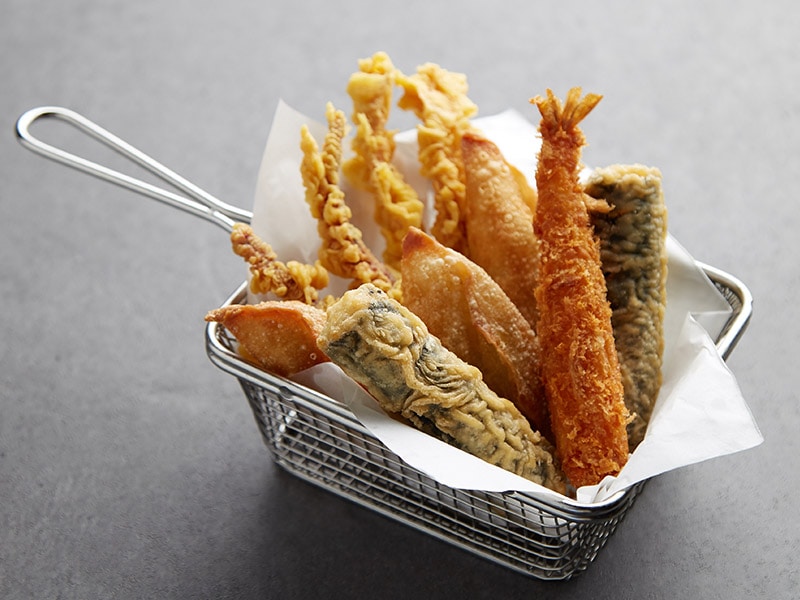
What is Twigim? The answer is anything coated in batter and deep-fried in Korean cuisine. Among different Asian delicacies, deep-fried edibles are no stranger. But the Korean Twigim has a classier and more fashionable vibe to it.
The term encompasses a wide range of foods, from vegetables to meat and seafood. During the wartime shortage of oil, Twigim was an expensive and alluring delicacy.
Nowadays, it is one of the most prevalent Korean recipes. The priciness is gone, but the charm endures. Potato Twigim, carrot Twigim, seaweed roll Twigim, etc., are a few popular choices.
Anyway, they should be accompanied with spicy sauce, Tteokbokki, and Sundae. Your doctor will probably grimace at such an obscene amount of fat. But your heart and taste buds will be eternally grateful.
Best Twigim in South Korea
Address: 88 Changgyeonggung-ro, Jongno-gu, Seoul, South Korea
Time: 9 AM–6 PM from Monday to Saturday, closed on Sunday
Website: http://kwangjangmarket.co.kr/
Phone: 0222670291
Address: South Korea, Seoul, Nowon-gu, Gongneung 2(i)-dong, 208
Time: 11 AM–11 PM from Monday to Saturday, closed on Sunday
Phone: +8229771120
Myeongdong Night Market
Address: South Korea, Seoul, Jung-gu, Chungmuro 2(i)-ga, 8-3-ga
Time: 12 AM–1 PM and 3 PM–12 AM every day
Approximate cost for one piece in the country: KRW 500 – 4,000 (USD 0.42 – 3.34)
23. Jjinppang – Steamed Buns With Sweet Red Beans
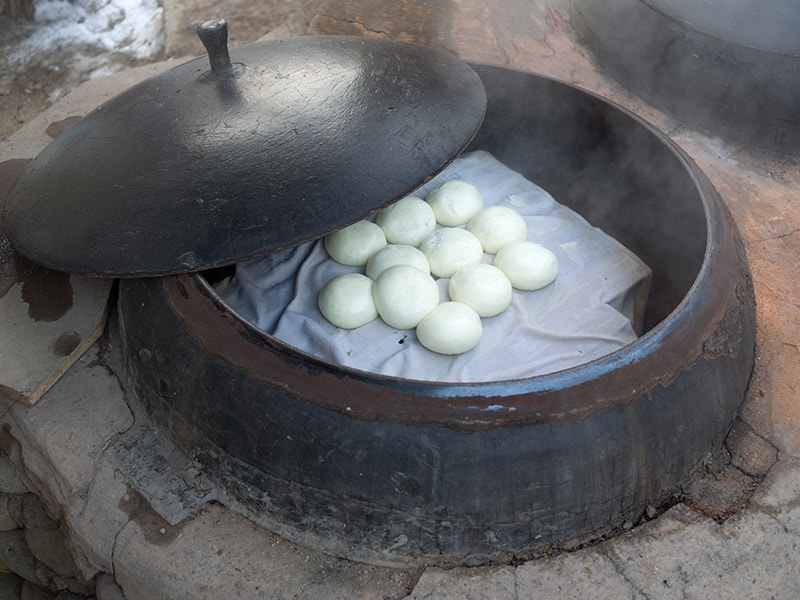
In the chilly Korean winter, it is superb to sink your teeth into warm, smoking Jjinppang. It is a steamed bun that is native to the coastal Gangwon Province. Visiting this place in October, you can partake in the annual Jjinppang Festival.
Traditional Jjinppang contains fermented dough and red bean paste. Another version, called Hoppang, uses normal dough and a sweeter, smoother filling. In the idyllic Jeju Island, you can find a sweet and sour orange-based variation of Jjinppang.
It is an enjoyable experience to eat Jjinppang in Pyeongchang, a county in South Korea.
Best Jjinppang in South Korea
Address: 64-1 Gwandeong-ro, Ido 1(il)-dong, Jeju-si, Jeju-do, South Korea
Time: 9 AM–8 PM every day
Phone: +82647528959
Address: 18 Jahamun-ro 15-gil, Jongno-gu, Seoul, South Korea
Time: 7 AM–9 PM every day, closed on Sunday
Website: http://tonginmarket.co.kr/
Phone: +8227220911
Approximate cost for one medium-sized bun: KWR 600 (USD 0.5).
24. Gungoguma – Roasted Sweet Potato
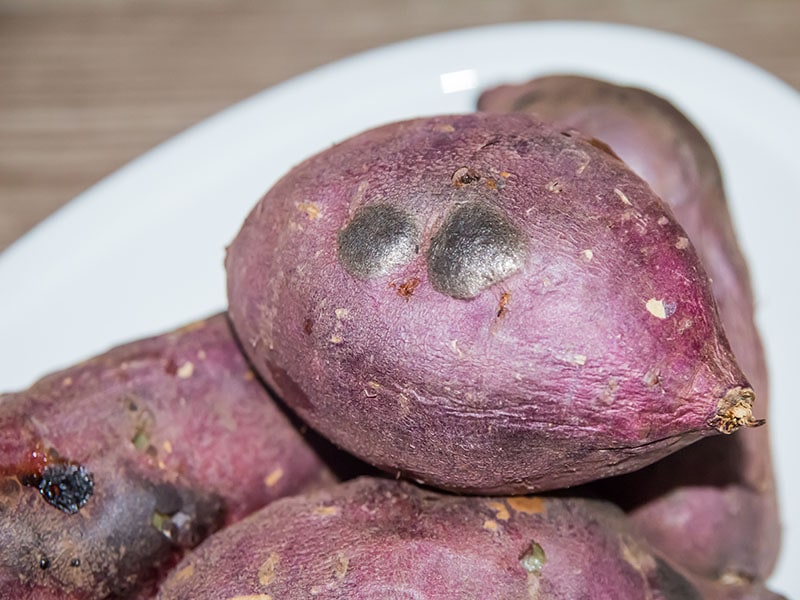
Sweet potatoes are a staple, fiber-rich crop in many countries. Thus, this roasted vegetable is one of the most popular side dishes in Asia. In South Korea, there is a snack called Gungoguma, a treat that any foreign visitor wishing to try.
When it is cold around autumn and winter, Korean vendors wearing a special hat called ushanka occupy easily visible spots and roast sweet potatoes in front of potential customers.
The sweet smell of Gungoguma follows the winds to make its way through people’s olfactory nerves. Few can resist such an attack, so most have to stop by.
Perfect Gungoguma should keep their skin while the inside is well cooked, soft, and creamy. There are many variations to choose from, such as Goguma (ordinary sweet potato), Hobak-goguma (pumpkin sweet potato), and Bam-goguma (“chestnut sweet potato”).
Best Gungoguma in South Korea
Address: Myeongdong-gil, Myeong-dong, Jung-gu, Seoul, South Korea
Time: 9 AM–9 PM every day
Address: 88 Changgyeonggung-ro, Jongno-gu, Seoul, South Korea
Time: 9 AM–6 PM from Monday to Saturday, closed on Sunday
Website: http://kwangjangmarket.co.kr/
Phone: 0222670291
Approximate cost for one roasted sweet potato: KRW 2000 – 3000 (USD 1.67 – 2.5)
25. Gamja Hot Dog (Korean Corn Dog)
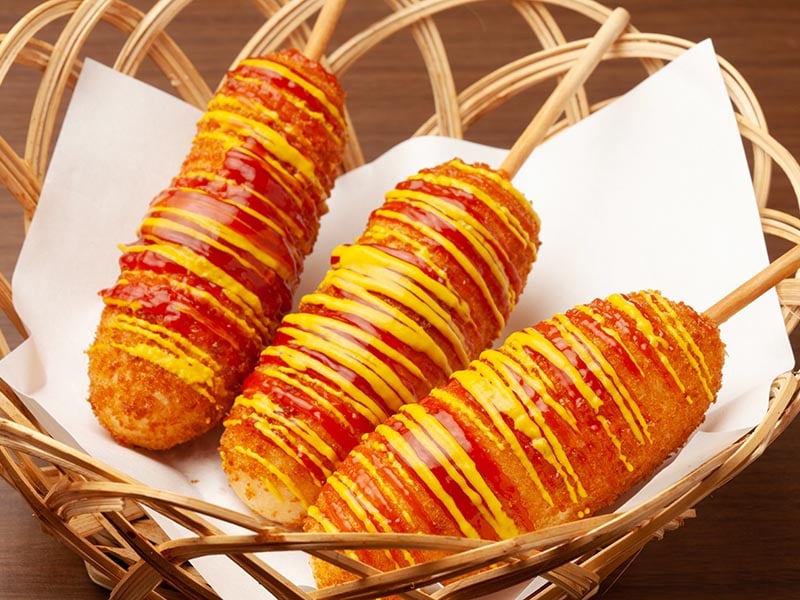
Hot dogs are for beginners; get yourself a level-up with Korean corn dogs. They represent a substantial improvement on your good, old sausage and bun combo.
The recipe starts with cutting ordinary hot dogs in half and skewering each piece with a slice of cheese. Next, coat them with a mixture of flour, egg, milk, and panko (bread crumbs) before grilling them until crispy and golden.
Dazzling stripes of red ketchup and yellow mustard are perfect garnishes for your Korean corn dogs. Just one thing to remember, though, hot dog and corn dog have the same sound in Korean. Specify your request carefully to the vendor to avoid confusion.
Can you guess who will win this Korean corn dog challenge?
Best corn dogs in South Korea
Address: Myeongdong-gil, Myeong-dong, Jung-gu, Seoul, South Korea
Time: 9 AM–9 PM every day
Address: 200 Achasan-ro, Gwangjin-gu, Seoul, South Korea
Time: 11 AM–10 PM every day
Website: https://www.common-ground.co.kr/
Phone: +8224672747
Approximate cost for one corn dog in the country: KRW 2,500 – 4,000 (USD 2.09 – 3.34)
26. Hweori Gamja – Tornado Potatoes
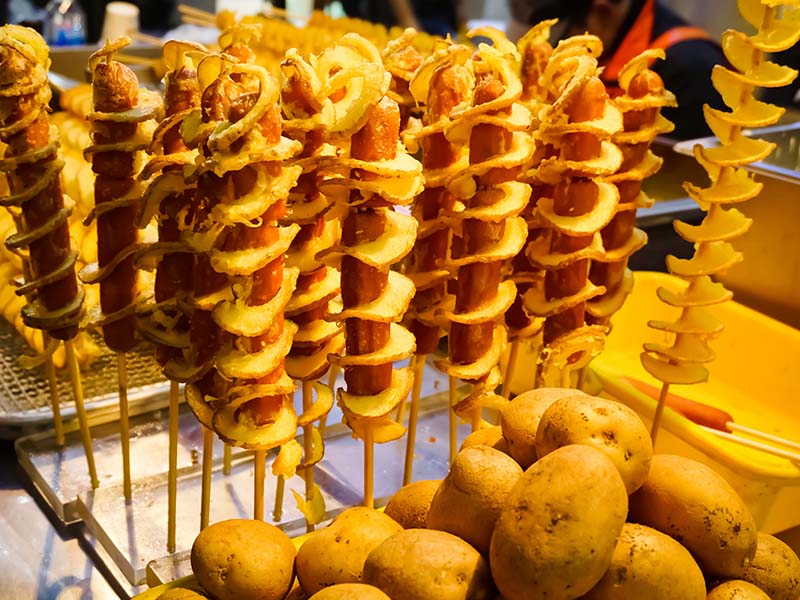
Many people refer to Hweori Gamja as spiral potatoes due to the dish’s impressive spiral-cut shape. However, let’s call it the proper label: tornado potatoes. A relatively new dish, skewered tornado potatoes adorn the Korean street food scene with eye-catching twirls and swirls.
Automation features heavily in the making of Hweori Gamja because only a machine can shred whole potatoes into perfect spirals. The next step is to season them with spices and honey before deep-frying them in oil. They sometimes come with a sausage stuffed in the middle.
Best Hweori Gamja in South Korea
Address: Myeongdong-gil, Myeong-dong, Jung-gu, Seoul, South Korea
Time: 9 AM–9 PM every day
Address: 88 Changgyeonggung-ro, Jongno-gu, Seoul, South Korea
Time: 9 AM–6 PM from Monday to Saturday, closed on Sunday
Website: http://kwangjangmarket.co.kr/
Phone: 0222670291
Approximate cost for one stick: KRW 2000 – 3000 (USD 1.67 – 2.5)
Resistance To Korean Street Food Is Futile
Aside from its well-known and much-hyped music and films, street food is fast becoming a powerful Korean cultural export. Succumb to its deliciousness and indulge yourself with crisp, wholesome Tteok-bokki or the iconic Korean Corn Dog.
Korean street food is a magnificent blend of tradition and modernity. You can find Western-influenced dishes sold side-by-side with foods dating back to Korean eras long gone.
In case you’re looking for an eating challenge, Beondegi and San-nakji are here to delight you!
Please feel free to share your thoughts and experiences in the comment section. If you consider this post to be useful, tell your friends about it and the joys of Korean foods. Thank you and see you soon!
